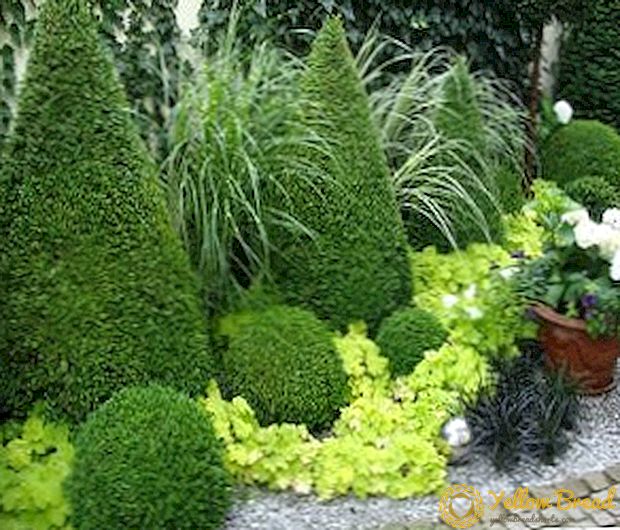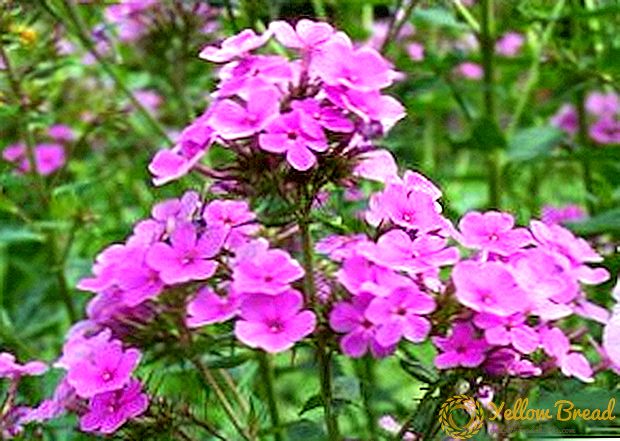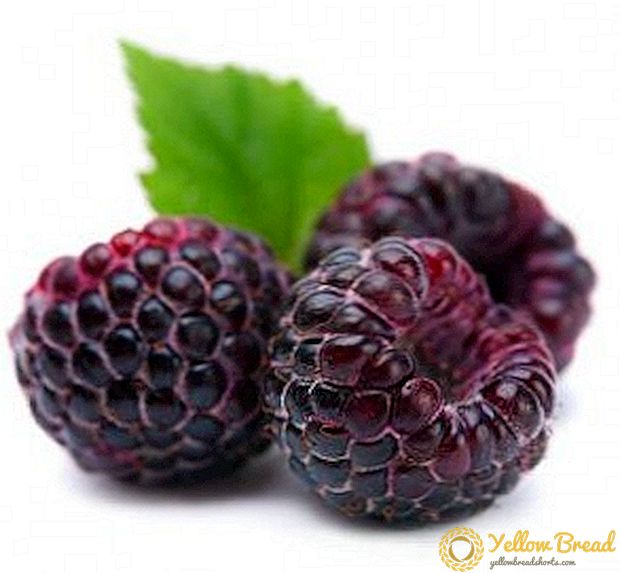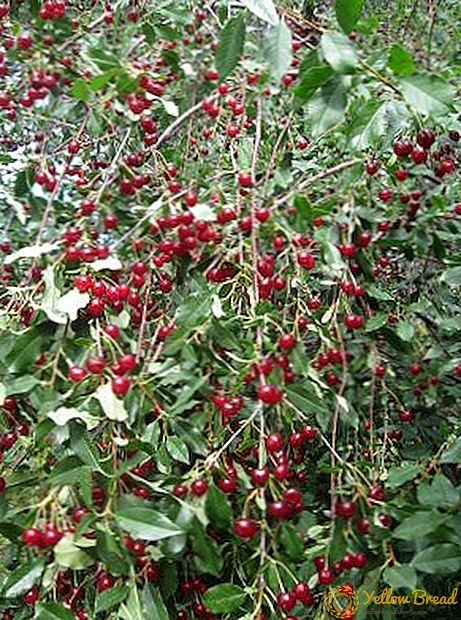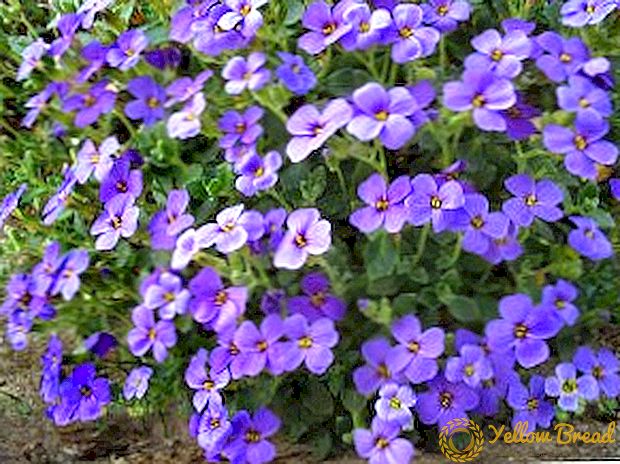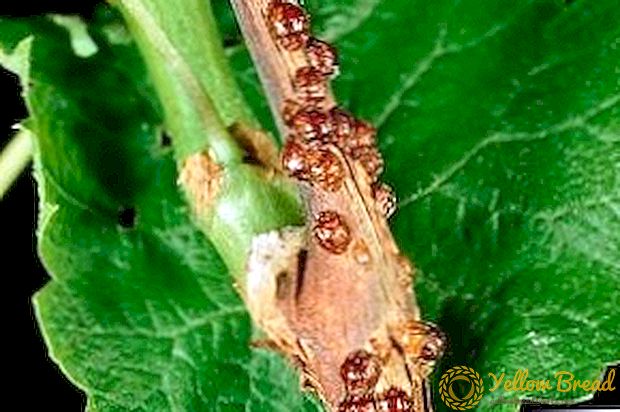 In order for your currant to give a good harvest, you need to take care of it, and pest control measures also include here. One of the most famous pests of currants - shieldka. Without timely control, these insects are capable of irreparably damaging the plant. In this article we will talk about the methods of pest recognition, methods of active control and prevention.
In order for your currant to give a good harvest, you need to take care of it, and pest control measures also include here. One of the most famous pests of currants - shieldka. Without timely control, these insects are capable of irreparably damaging the plant. In this article we will talk about the methods of pest recognition, methods of active control and prevention.
- How to recognize a pest
- What harm is it
- Life cycle
- External signs of damage
- Prevention and agrotechnical rules
- Active fight
- Preparations from shityovki
- Folk recipes
How to recognize a pest
The shield of the currant or currant pillow is rather small in size; therefore, it is not so easy to recognize individual individuals. People who have excellent vision, can observe the rapid movement of small insects on the leaves and stalk of currant bush.
If the vision is poor, then you can use a magnifying glass. Carefully inspect the places on the branches, where cuttings of leaflets abut. The bottom of the sheet is the most favorite place for currant cushion. Adults can be seen without a magnifying glass, they look like specks on the stems and leaves.
What harm is it
Shchitovka are very dangerous pests that can destroy entire plantations with currants in a few years. In the production, when identifying a large number of these pests, hard quarantine is imposed with a ban on the export of berries and seedlings.
Currant pods fall on the bushes along with imported saplings, purchased soil, or “stray” method (wind, rain, animals, etc.). 
These pests are able to suck all the cell sap of leaves, young shoots and even berries. If you do not take any measures to combat the scutes, then it threatens the complete destruction of the plants.
Currant bushes will gradually dry out the leaves and shoots, as a result, the bush will die, and the shield insects will move to another plant.
Life cycle
Currant bushes most often affects the currant pillow. The development cycle of these pests is quite pronounced. The female, which was fertilized, feeds on the juice of berries and leaves for the next three months, and lays eggs after the expiration date.
According to various sources, one female is able to lay from 250 to 500 eggs.After that, the female dies.  Females have a shield with a widely rounded and elongated end, just under it are all the eggs. The fertilized female simply dries out, leaving a lot of space for several hundred eggs.
Females have a shield with a widely rounded and elongated end, just under it are all the eggs. The fertilized female simply dries out, leaving a lot of space for several hundred eggs.
In such conditions, the eggs can persist in the most severe weather conditions, but in early May, the female shchitovki lays eggs on leaflets and slightly lumbering branches.
Later on, larvae of the first age (vagabond) emerge from the eggs, which gradually spread throughout the bush (except for woody branches).
Further, vagrants go through stages of development from second instar larvae to mature males and females. Within three months, the insect fully matures and is ready for the fertilization process.
The percentage of males in the population of currant pillows is about 25-30%. After fertilization of females, male individuals die. The process of full maturation of eggs takes 9-10 months. In the southern regions of our country, the scale insects manage to perform two generations per year. 
External signs of damage
When shchitovki hit currant bushes, there are many external signs of damage. On the leaves of the bush appear dark yellow spots, which eventually become larger.
Further, if we do not start pest control in a timely manner, some leaves of the currant bush begin to shrink and fall off. In addition, it can be noted that young and slightly lignified shoots also begin to dry out.
Another external sign of damage to the bush with flaps is the presence of a sticky liquid consistency on the sheets. This texture is also called the pad, and it is the same mature sex grates.  And if there are a lot of these pests on currant bushes, then the fall begins to literally flow down the leaves and branches.
And if there are a lot of these pests on currant bushes, then the fall begins to literally flow down the leaves and branches.
Prevention and agrotechnical rules
One of the most effective preventive measures against currant pillow is considered to be hilling bushes in late autumn. After the snow melts and the first warm days begin, the hilling is removed and removed.
One more measure of the prevention of shield insects on currants is spraying of bushes with karbofos before the very beginning of flowering. This insecticide is an excellent tool in the fight against the prevention of mass occurrence of insects, but much depends on the period during which you will treat the bushes.
It is important to understand that this drug will not help overpower the eggs of the scutes, but adults will not be able to live on currants if it is treated with karbofos.
This suspension for 14 days remains on the leaves and branches of the currant, and at the first appearance of the shields it kills them. The karbofos is an intra-intestinal way, so pests will not be able to eat leaves.
Also effective method of prevention is spraying the bushes tinctures of pine needles and citrus peel. And the richer this infusion will be, the more effective the preventive measures will be. 
Active fight
If you notice the first signs of scarab on the currant bush, then this bush should be immediately isolated (can be covered with a plastic bag). After this, carefully examine whether the neighboring bushes are affected.
Next, you should conduct an active pest control, and you can get rid of them with chemical preparations, and folk methods.
Preparations from shityovki
First of all, I would like to note that many insecticidal preparations are ineffective in combating with adult flake insects, therefore, they must be removed by mechanical means.
To do this, you can use a sponge, a cotton pad or a toothbrush. The sponge should be wetted with a solution of soap or any other dishwashing detergent. It is necessary to wipe each leaf and young escape.
Even if you spend about two hours on mechanical cleaning of one bush, do not be lazy to do it, and do not miss the leaves, even if it seems to you that they are not amazed. After all, if you remove not all the scale insects from a bush, then they will begin to multiply again and can hit the neighboring bushes.
 It must be remembered that the female shchitki effectively protects the eggs from the effects of insecticides, so a single spraying may not be enough. In addition, multiple spraying may be small.
It must be remembered that the female shchitki effectively protects the eggs from the effects of insecticides, so a single spraying may not be enough. In addition, multiple spraying may be small.It is best to use contact neonicotinoids. Among the drugs of this group in the fight against Shchitovki the most popular and effective means is Aktara.
But if you do not have the opportunity to purchase it, you can use the following analogues: Apache, Tanrek, Mospilan, Colorado, etc. Use these drugs should be as follows: the insecticide is diluted in water according to the instructions, after which the whole currant crown is immersed in a bucket with a solution.
This method is much more effective than conventional spraying, and with repeated procedures, the chance to kill all female pats increases several times.
To combat the currant pillow, you can use organophosphate compounds (Spark, Aktellik, Alatar, Kemifos, etc.) or hormonal insecticides (Piriproxifen, Admiral).  Processing of any of these funds should be carried out no more than three times per season with an interval of one week. If you have allergic reactions of organophosphorus compounds (which sometimes occurs), then it is better not to use these drugs. In addition, their effects are harmful for asthma patients, children and pregnant women.
Processing of any of these funds should be carried out no more than three times per season with an interval of one week. If you have allergic reactions of organophosphorus compounds (which sometimes occurs), then it is better not to use these drugs. In addition, their effects are harmful for asthma patients, children and pregnant women.
Folk recipes
To fight with the shield in the garden, you can use the popular recipes. Our grandmothers and grandfathers have long known how to effectively deal with currant pests. Here are some of the most effective folk recipes:
- Soap-oil solution. To make it you need to take soap and sunflower or olive oil in proportions 1: 3. The resulting emulsion is necessary to wash the leaves and shoots of currants. After 8-10 hours, the emulsion is washed off with water. It is necessary to carry out 2-3 such procedures with an interval of 7-10 days.
- Tincture of garlic. 7-10 medium (crushed) cloves of garlic are put in a glass of water. After that, the content is infused for 2 days. This tool can wash the currants or spray (only in this case, the tincture must be filtered through gauze).
- Tincture of pepper. Boil 50 g of fresh pepper in half a liter of pure water. The resulting liquid should be left in a dark, dry place for a day. Next, one liter of water is taken 10 ml of tincture and 5 g of soap. The resulting mixture can be sprayed currant bushes.
- Tincture of tobacco. Pour 1 liter of hot water into the contents with 80 grams of tobacco.Insist concentrate throughout the day. Next, strain the tincture and dilute in a liter of water. This tool can be sprayed and washed with currants.

But remember that traditional methods, though safe, are not as effective as insecticidal preparations. Therefore, if the effect of the struggle with traditional methods is absent, then begin the fight against pests through chemical preparations.
Now it became clear that these pests go through a rather pronounced life cycle, and it is not so easy to overcome parasitic females with the help of insecticidal preparations. But if you do not forget about all the precautions (prevention) and promptly take care of the berry bush, the currant pad in your garden will not appear.

